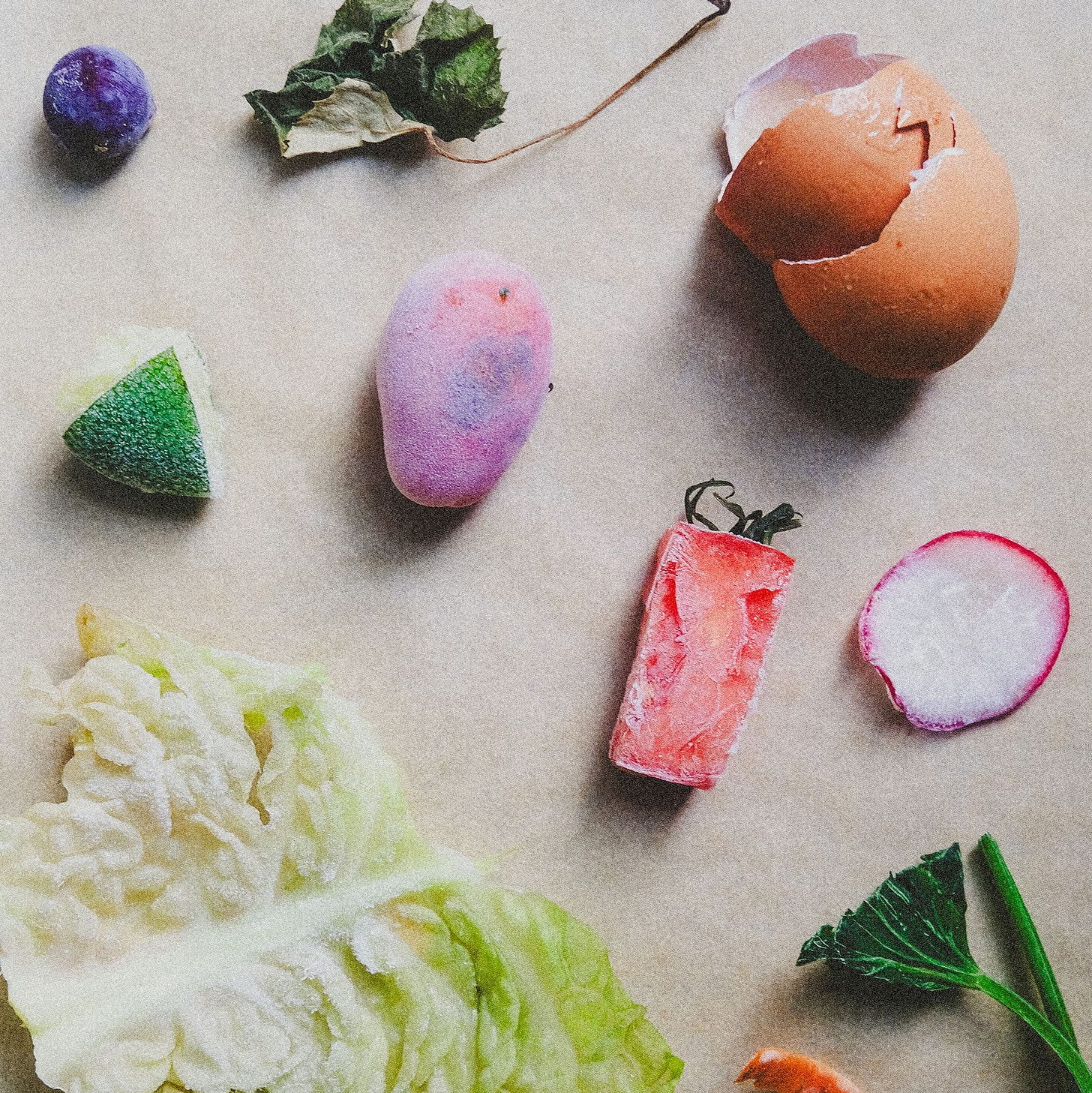To live is to waste and to cook is to compost.
For years, my limited imagination kept me from seeing the practicality of composting—even as I matured as a cook, and even as the carrot peels, egg shells, and wilted, rotted greens accumulated in our landfill-bound garbage. Memories of fruit flies and the subtle, almost-sweet scent of countertop rot made me believe that composting wasn’t for a city girl like me.
While the coffee grounds are still like glitter—somehow in and on everything—I now dutifully set aside every organic I can. While I cook, I drop ends and peels into a “garbage bowl” on my countertop. When I clean up the kitchen, I dump the bowl into a lined bin in my freezer where it stays, frozen and odorless, until pickup day. It’s painless and tidy, and not difficult at all.
To be clear, I don’t, in the true sense of the verb, compost. I separate our fruit and vegetable scraps and our local compost-pickup service, BK Rot, does the real work—the labor and science of turning my everyday organic waste into soil-amending compost. Each week, a worker from BK Rot pulls up to our building on an electric bike and dumps the purple bucket of frozen food scraps I somehow almost forget to put out in time into a container on an attached trailer. Off it goes to Bushwick to become compost, a process that can take anywhere from weeks to years.
Before municipal waste collection, backyard chickens and free-roaming, garbage-eating pigs took care of much of New York City’s organic waste. Now the majority goes to landfill, often out of state, where the plastic-encased organics decompose, emitting huge amounts of climate-warming methane and causing disease and environmental disaster to neighboring communities.
Compost has been fresh on my mind again as the city rolls out residential curbside organics pick-up in Brooklyn for the first time since Covid. (The Bronx, Staten Island, and Manhattan will follow in the next year.) Many neighborhoods, including mine, were never serviced at all. (Not to be discounted, there have also long been food scrap drop-off sites at greenmarkets and other composting services, but to say these sites are mainstream wouldn’t be accurate.)
The city’s organics pickup program does not, unfortunately, create compost. The organic waste from the drop-off and curbside bins is processed into “biogas” in industrial anaerobic digesters. Imperfect, expensive, and decidedly not compost, this process is still preferable to the landfill.
Admittedly, the city’s program is interesting because it accepts forms of organics traditional compost services can’t, including cooked food, meat, and soiled cardboards. Earlier this year the city installed drop-off bins, which I’ve appreciated in the weeks I do actually forget to put out our BK Rot pickup, and for items BK Rot can’t accept or I don’t feel comfortable discarding, such as prepared, spoiled food and garden waste like end-of-season tomato plants that succumbed to fungal blight.
Even though curbside pickup comes to my neighborhood next week, I will continue using (and paying for) BK Rot’s services. I want my food scraps to make soil, not gas, and I also believe in the group’s mission. But mainstream organic waste collection is still a very good thing.
If you’re in New York and you don’t separate your scraps, I hope the new program will inspire you to do so. BK Rot and other small composting services will continue to need support, and if you have the means they provide an invaluable, convenient service.
Separating your food scraps is easy. Plus, it creates conveniences—less organic waste in room temperature garbage means less rotting garbage smell in your home.
The freezer method is simplest in my opinion. I have this handy bin (size 6L) and use these compostable bag liners (size 9.84L). Brown paper bags are an even better option—a natural carbon-rich compost “brown” the compost pile will need anyway. If you drop your scraps at a greenmarket, you could also dump your frozen scraps directly into their bins on site, sans liners.
And that’s it. No fancy appliances, containers, or systems needed.
Subscribe for next week’s edition, in which I will share my methods for reducing food waste before it makes it to the compost bin. 🪣
If you want to know more about the history of composting in New York City, and waste in general, you may enjoy “Garbage Land” by Elizabeth Royte. It was published in 2005, but is still painfully relevant.
If you liked reading this, feel free to click the ❤️ button on this post so more people can discover it on Substack.
Home Food is edited by Jillian Goodman.




Oh wow I’ve never even thought of this. I really hope they do something like this in London. Off to google I go.
I never knew you could just freeze the waste and dump it later! Such a neat idea💡